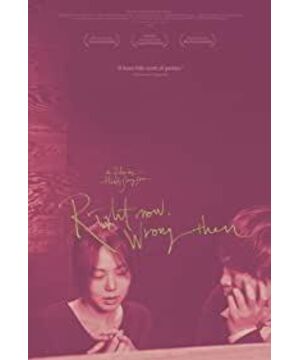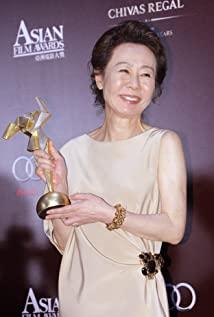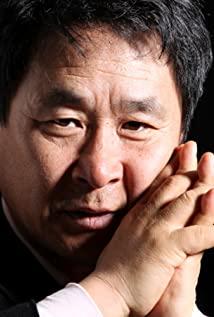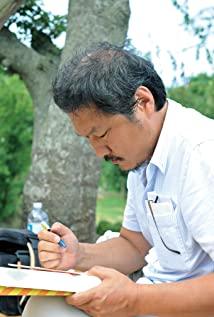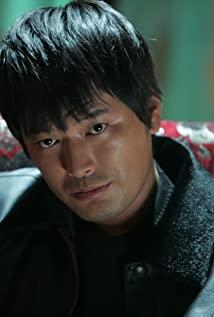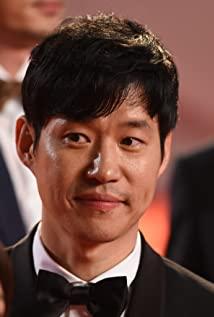-----"Right Now, Wrong Then" is
still Hong Sang Soo, and the same rhythm and style took me through Hong Sang Soo's annual journey. From the moment I fell in love with Hong Sang Soo, I began to follow Director Hong's films. Between change and constant, between familiarity and unfamiliarity, what collided with each other was a typical "Skip" of Hong Sangxiu's label.
This "Right Now, Wrong Then" still repeats Hong Sang-soo's unique label. The actors have changed, the scenes have changed, but the general structure and dialogue flow remain familiar.
This movie is composed of two parallel spaces, which is familiar to friends who often watch Hong Sang-soo's movies. However, two independent spaces are actually two independent individuals forever. Just like twins, they seem similar, but they are fundamentally different.
The same scene, the same actors, the same order, this belongs to the same soup, but different camera positions, different tone of voice, and different dialogue methods belong to the changing seasonings. After the mutation, Hong Sang-soo leads the film to a different result, which is another possibility of the world he has been looking for.
This possibility is related to the psychology of the audience, and Hong Sangxiu is well aware of the psychological needs of the audience. In the real world, we live in the only space within a time node. What we have done at this moment is in the past, just like the title of the film that intentionally goes the opposite way at the beginning, "Right then and Wrong" . It's over, it's over, there's no regret medicine to take. But in Hong Shangxiu, the unchangeable past in reality is reset, and the audience has a chance to "relive" once. This "Godsend Opportunity" has firmly grasped the audience's G-spot. What will happen to live again? All familiar scenes and actors are known to the previous part, and the audience has an omniscient perspective of God at this time. Hong Sangxiu handed over the referee to you. You seem to know that familiar things find unfamiliar dislocations and deviations in the familiar operation. That is a subconscious pleasure. Knowing but not knowing, without suspense and creating suspense, the curiosity drives you to discover what you know and do not know. This time, it was firmly in the hands of Teacher Hong.
So how to explore the possibility of the same story setting? This is where the need for contingency arises. Regarding Hong Sangxiu's structural play, if possibility is a consistent horizontal and vertical axis, then it is the vertical axis of contingency in repetition that defines Hong's philosophy. Below, we briefly look at a few examples.
1. In the second part, in the female protagonist's studio, this long shot is opened from the palette, and finally the painting does not appear in the lens (the first part of the painting is displayed directly in front of the audience), this time the same is still the male. The host stared at the heroine's painting, and the key to the dialogue was still I was thinking about you, Miss Xijing. However, attentive viewers may find that the heroine's expression and attitude have changed. For the first time, the two seem to be intertwined under a hypocritical and polite routine, complimenting and humble to each other. And this time, the heroine showed a kind of confidence and self, and the hero also changed his way of commenting on the paintings, even merciless. This leads to a flashpoint in the same scene in the second part. This subtle change of gathering sand into a tower has triggered the emotional trend between the hero and heroine.
2. In the second part of the shochu drinking part, it went all the way to another field because of the gap opened by the appeal scene. With an accidental trigger, the two sides tore off the relatively hypocritical and contrived faces of the first part. So in the part of drinking soju, the male protagonist directly confessed his love, and he admitted that he got married and had children too early. The fact that the director is already married creates an embarrassment of not being able to move forward). The female protagonist felt lonely at first, and suddenly discovered the cuteness of the male protagonist, but did not care about the details of reality (marriage and children, distance between different places), which provided the possibility for both parties to go further (even if it was only for a short day). An extremely important detail of this scene is the ring. In the last part, the director did the action of touching a cigarette, but he hesitated for a long time and said that he could not find the ring. At that time, the audience might feel that the appearance of the "ring" was unclear. At this part, the "ring" appeared without pretentiousness, and was worn on the hand of the heroine, and it became a token of love. Hong often uses some props, and even finds some omen indications and hints for the audience in two separate spaces, such as the umbrella in "In Exotic" and the ring in this film.
3. The climax of the second part appeared at the party of Miss Xi Jing's friends. In the first part, Miss Xi Jing was present, and Hong's most signature push and pull was used to address the inflection point and emotional mutation of the dialogue. In the first part, Miss Xi Jing's face changes with extreme push and pull, which left a deep impression on the audience, which led to the final break. In the second part, the most important and outstanding Miss Xi Jing actually "disappeared", that is, "absent". But between the absolute "presence" of Miss Xi Jing in the first part. In this second part, the audience will naturally lead their thinking and expectations to that "absence". And the "absent" Xijing just prompted the director to show his truest self more recklessly and frightened Xijing's friends, which further confirmed the "absent" Xijing's "ubiquity" in this scene. It was her "absence" that led to this scene and triggered this "murder case". The contingency of mutation is precisely here.
From these examples, we can see that Hong Sang-soo quietly capoed the original story, played another song, and deduced another possibility by chance. Hong's sketches have always been lighthearted, and those who accuse him will say that they lack depth and thickness. He always discusses a special group in the water, with a touch of subtle observations and insights in his life (all will be on interesting dialogues), In the end, it will be very easy and poetic to walk this film, and it will not have the solemnity of European masters. However, I want to say that Hong Sang-soo will always only play what he is good at, and he is more compatible with the post-modern turn of philosophy. Structure and deconstruction, Hong Sang-soo turns postmodern philosophical words into images. Repetition and difference can be seen horizontally as ridges and side peaks, the distance and height are conscious of the audience, and Hong Sangxiu only acts as a passing dragonfly. Deep or shallow, that must not be detected by the audience?
November 24, 2015
View more about Right Now, Wrong Then reviews


